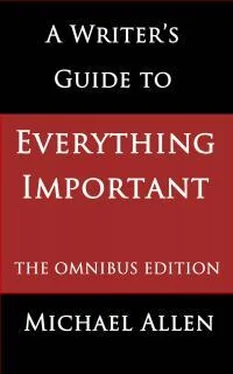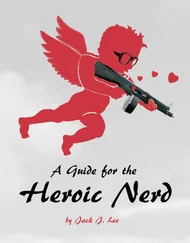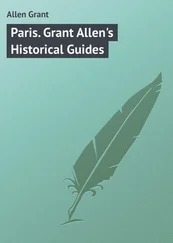After some forty years as a published writer, in 1999, I lost interest in traditional publishing and published my own books thereafter. Today I operate exclusively as an ‘indie’ or self-publisher through Amazon’s Kindle Direct Publishing facilities. Some, though not all, of my traditionally published novels have been reprinted as ebooks.
I am an Englishman, and my principal experience has been in UK publishing; but most of my fiction has also been published in the US, and I have had extensive dealings with American agents and publishers.
1.5 Assumptions
While writing this book, I am going to make certain assumptions about my readers.
I am going to assume that you have either had, or are in the process of getting, a pretty good general education. Some things are best learnt early, and one of them is a basic grasp of the English language.
I am going to assume that you have a useful working knowledge of modern computing techniques: word processing in particular. You know how to use google, and so I will not litter my text with hyperlinks; I want you to stay here and read my book, not get distracted by clicking on blue links.
I am going to assume (since you are reading this book) that somewhere along the line you acquired the ambition to write full-length fiction. You may already have completed one or more novels, and may well have had some experience of sending off your work to publishers or agents.
Just occasionally I have come across writers who claimed that they were only interested in writing for the pleasure of doing the job, and were not ambitious for money, fame, or literary reputation. I am sure they were not lying, but I am not at all sure that they were not fooling themselves. Most writers are rabidly ambitious. They yearn for success, in all its glorious forms, and they want it by next Tuesday. At the latest. I am going to assume that you are a member of that club.
PART 2: The traditional way of finding readers
2.1 The old days
I’m not going to go too far back in time – just to about 1950 or so.
And why go back at all?
Because in order to appreciate the changes which have occurred in the last ten years or so, you need to know how things were, well within the memory of writers living today.
Until about 2000, there was only one way for a novelist to find readers, and that was to persuade an established publisher to accept her work, and to print and publish it at the firm’s expense. The traditional way of rewarding an author for a novel was to pay her a royalty, perhaps 10% of the list price of the hardback edition.
Big sales equalled big money. Modest sales, after two or three books, meant that a publisher would probably wave you goodbye.
Sales will naturally vary according to the size of the home market. In the UK, 2,000 copies of a hardback would be a reasonable start; in the US, 3 or 4 times that figure.
Of course, you could self-publish a book, in days gone by, if you had a lot of money to spare. But bookshops would never stock it because they would regard it as rubbish. Your friends might buy a few, out of loyalty, but you’d end up with a vast unsold stock. So, it was find a publisher or nothing.
Here’s how it used to be – and still can be if you wish to go down that route.
2.2 Finishing the manuscript
Once upon a time, in fact until about 1990, there weren’t any word processors and printers. Just typewriters.
As often as not, writers wrote their books in the old-fashioned way, using a pen and paper. (John le Carré still does use that method.) But publishers would not consider even reading a novel unless it was typewritten. So writers either typed out their own fair copy (time-consuming and tedious), or paid a copy typist to do it (expensive).
That was the way I operated myself until I acquired an early word processor in 1990.
By the way, I once heard of a writer who had read somewhere that a manuscript intended for a publisher’s eyes should be double-spaced. So he typed out the manuscript with a space after each letter, and two spaces after each word.
No, no, you mustn’t laugh. If you lived in the English provinces, or out in the wilds of Wyoming, it was very hard to find out what the smart fellers in New York or London actually wanted.
I shall try to protect you from similar misunderstandings.
It is a curiosity of the book trade that the finished typescript of a novel continues to be known in the business as a manuscript; or ms for short. Which it once had been. The Jane Austens of this world had no typewriters.
2.3 Sending it off
Once you had a tidy manuscript, fit to submit in the required format, you then had to choose a publisher to send it to. And how could you do that?
It was, believe it or not, a difficult problem. In England, forty or fifty years ago, there was only one reference book for the book trade, and that was The Writers’ and Artists’ Yearbook. It still exists, and fortunately it is now a great deal more informative than it was in, say, 1960.
In 1960, the W&A did indeed provide the names and addresses of publishers. But little else. It might tell you that the firm published fiction and non-fiction. And occasionally it might add, belles-lettres. And you wouldn’t be much wiser about that even after a trip to the dictionary.
As to what type of fiction was required – well, that was a mystery. True, you could poke about in your local library and see who published what; but it was all a bit hit or miss. Result: romances were sent to serious-minded publishers of theology, and works on theology were sent to Mills & Boon.
Yes I know you think that’s ridiculous, but it happens all the time. Nearly did it myself once.
And what you were sending, please note, was your one and only typewritten manuscript. What if it got lost? And manuscripts did get lost, believe me. Either the post office or the publisher might lose it. And you might well have a smudgy carbon copy as a backup, but it wasn’t fit to offer to anyone, and all it would do was provide you with the basis to make another clean copy.
However, after various trials and tribulations, let us suppose that you got the thing into the post, and that you had managed to dispatch it to a reasonably sensible and appropriate firm. Then what?
Then you waited. And waited. And waited.
2.4 The slush pile
In times past, every publisher’s office would have some kind of postal delivery guy, who would stagger in with a sackful of typescript-shaped parcels. Every day. In fact sometimes twice a day. And these would be plonked down on the desk of whoever was in charge of logging them in. (If they ever were logged in, and my experience suggests that they sometimes were not.)
This pile, and the similar ones in all publishers’ offices, were known throughout the English-speaking world as the slush pile.
That is, you might think, a rather rude and dismissive term; and you would be right. But long years of experience had demonstrated to the publishers, beyond reasonable doubt, that very little of it was likely to be of any interest whatever.
First, there were the solemn treatises on theology, which could be discarded. And the mss which were literally mss, written in green ink on lined paper. Then there was the one from the man who had double-spaced everything, and he could be immediately discarded too, especially as he made the girls in the office cry, at the thought of all that wasted effort.
And as for the rest…
Well, let’s take some proper evidence.
In 1989, The Times reported that the well-known British imprint Hutchinson was receiving about 1,000 manuscripts a year. One of these unsolicited manuscripts might be published every couple of years or so. Maybe.
Читать дальше












